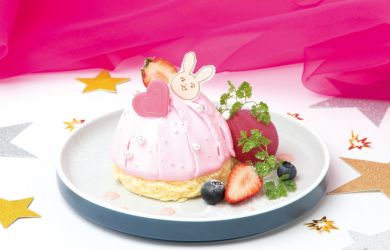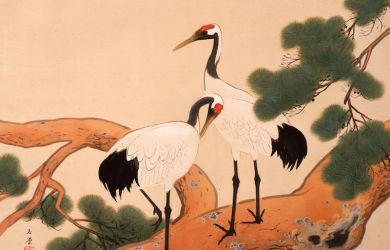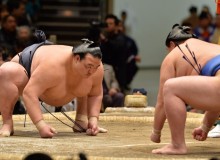
Originally published on metropolis.co.jp on June 2009

Akashiro Miyu
As the author of Metropolis’ biweekly “Pop Life” columns, Patrick W. Galbraith gives Tokyo expats insight into Japan’s contemporary cultural landscape. Now, the 27-year-old Alaska native is reaching out to a wider audience. The Otaku Encyclopedia, released earlier this month by Kodansha International, is the most comprehensive look yet at Japan’s glorious geekdoms, offering a ground’s-eye view of the phenomenon that’s sparked worldwide interest. Here’s a taste of some of the fun between the covers.—Steve Trautlein
Otaku (オタク): Nerd; geek or fanboy. A hardcore or cult fan. Originates from a polite second-person pronoun meaning “your home” in Japanese, allowing the speaker to refer to the listener indirectly. Since the 1980s it’s been used, much like the term “geek” in the US, to refer to people who are really into anime, manga, video games and technology.
The etymology of the word is complex, but the explanation preferred by cultural commentators is that because young nerds stayed home a lot, they were unable to manage social interactions and referred to one another indirectly as “otaku,” the way their mothers did with each other. However, otaku themselves tend to stress that they imitated other fans who used the word, not their parents.
In 1983 the essayist and humorist Nakamori Akio came across fans at doujinshi (amateur manga) markets calling one another “otaku.” Shocked by their numbers, behavior, and appearance, he penned an unflattering article titled “Otaku Research.” Then in 1989 four little girls were murdered by a man the media labeled the “Otaku Murderer,” because he was found to have a massive collection of VHS tapes, including anime. The formerly innocuous word took on a taboo tone for many Japanese and was banned on one TV network.
Despite this negative image in Japan, “otaku” soon entered the English vocabulary. It gained traction at anime conventions in the early 1990s, and spread like wildfire with the translation of the anime Otaku no Video in 1993. That year, the word even appeared on the cover of Wired magazine’s premiere issue. In 1994, the annual convention Otakon was formed, referencing otaku in its very name. In 1996 the word was used in William Gibson’s novel Idoru, and then a slew of news articles on anime fandom in the late 1990s and early 2000s. Otaku was popularly adopted to mean a specialist of Japanese anime, manga and video games, and extensions of these such as cosplay, figures and idoru.
Back in Japan, “otaku” still had negative connotations until the early 2000s. However, the acceptance of anime overseas led the Japanese government to start actively promoting Japanese pop culture. Research firms ran the numbers and found otaku are ultra-consumers whose enthusiastic spending on hobbies didn’t decline during the recession. Otaku were suddenly a bright spot for recessionary Japan.
In 2005, the success of Fuji TV’s Densha Otoko heralded the beginning of the good-guy otaku image that changed the face of Akiba. Today it’s not uncommon for celebrities like Shoko-tan (Nakagawa Shoko), or politicians such as Aso Taro, to associate with otaku.

Ayakawa Yunmao started cosplaying in 1997, when she was 13, went pro in 2003, and became the director of the Japanese National Maid Cooperative in 2008. She has published a book on cooking for otaku, and works as a journalist for both Japanese and American publications.
PG: Do you consider yourself an otaku?
AY: To me, “otaku” means someone who is sincere with his or her hobby. It’s about having passionate emotions. I’ve searched my soul and I know I’m an otaku to the core. If I’m reincarnated, I’m going to be an otaku again. It’s a good life writing doujinshi and cosplaying. I’ve been an otaku as long as I can remember.
![]() Akiba-kei (アキバ系): Akiba-type; geek. The kind of otaku who hang out in Akihabara. Akiba-kei tend to be particularly interested in the moé (pronounced moéh) side of anime, manga, video games, and idoru. That is, they like pure, little-girl characters and want plenty of fan service in their dating simulators and doujinshi (amateur comics).
Akiba-kei (アキバ系): Akiba-type; geek. The kind of otaku who hang out in Akihabara. Akiba-kei tend to be particularly interested in the moé (pronounced moéh) side of anime, manga, video games, and idoru. That is, they like pure, little-girl characters and want plenty of fan service in their dating simulators and doujinshi (amateur comics).
![]() Bishojo (美少女): Pretty or cute girl, although the literal translation is “beautiful girl.” Bishojo characters tend to stretch the limits of femininity and often have unnaturally long legs and absolutely massive breasts.
Bishojo (美少女): Pretty or cute girl, although the literal translation is “beautiful girl.” Bishojo characters tend to stretch the limits of femininity and often have unnaturally long legs and absolutely massive breasts.
![]()
Cheki (チェキ): Instant-photo camera from Fujifilm. “Cheki” also refers to the actual photos taken with such a camera. These days cheki have been adopted by maid cafés, where personal messages are written on them for customers.
Cosplay (コスプレ): “Costume” plus “roleplay.” The act of dressing up as a favorite character from anime, manga, or video games. It most likely has its roots in the Star Trek conventions of the 1960s in the US. In 1978 the science-fiction critic Kotani Mari attended the Japan Sci-fi Convention wearing a costume from Tezuka Osamu’s Umi no Triton (Triton of the Sea) and is often mistaken as the first cosplayer in Japan. But according to Kotani, people were already cosplaying at Comiket the year before.
![]() Doujinshi (同人誌): Amateur or professional magazine, most often manga, published independently by a group of fans (circle). Initially this kind of work consisted of original stories and characters, but it shifted to “parody” by taking characters from established series and placing them in new stories, alternative couplings, or parallel worlds. The plots are often created by diehard fans who want a story to continue after it officially ends. Others are more interested in seeing their favorite characters in sexual encounters that were never intended by the original creators.
Doujinshi (同人誌): Amateur or professional magazine, most often manga, published independently by a group of fans (circle). Initially this kind of work consisted of original stories and characters, but it shifted to “parody” by taking characters from established series and placing them in new stories, alternative couplings, or parallel worlds. The plots are often created by diehard fans who want a story to continue after it officially ends. Others are more interested in seeing their favorite characters in sexual encounters that were never intended by the original creators.
![]() Eroge (エロゲー): Erotic video and PC games where the player’s avatar has sex with numerous girls in a fantasy harem.
Eroge (エロゲー): Erotic video and PC games where the player’s avatar has sex with numerous girls in a fantasy harem.
![]()
Fan service: Showing anime or manga characters in risqué or compromising positions to give the fans a thrill. Showing down a girl’s top as she bends forward is a classic.
Fujoshi (腐女子): Rotten girl. An ironic pun on the homonym “fujoshi” (婦女子), meaning “woman” or “lady.” Girls who read yaoi or Boys’ Love manga.
![]() Gattai (合体): Unite; combine into one. Also a union between robots. Generally characters in different robots join together to create a bigger, stronger robot that kicks ass.
Gattai (合体): Unite; combine into one. Also a union between robots. Generally characters in different robots join together to create a bigger, stronger robot that kicks ass.







